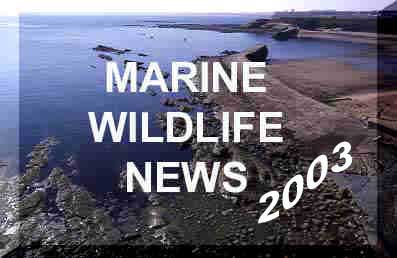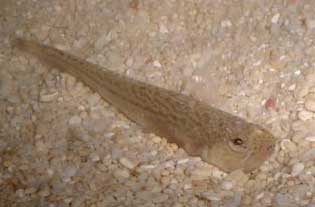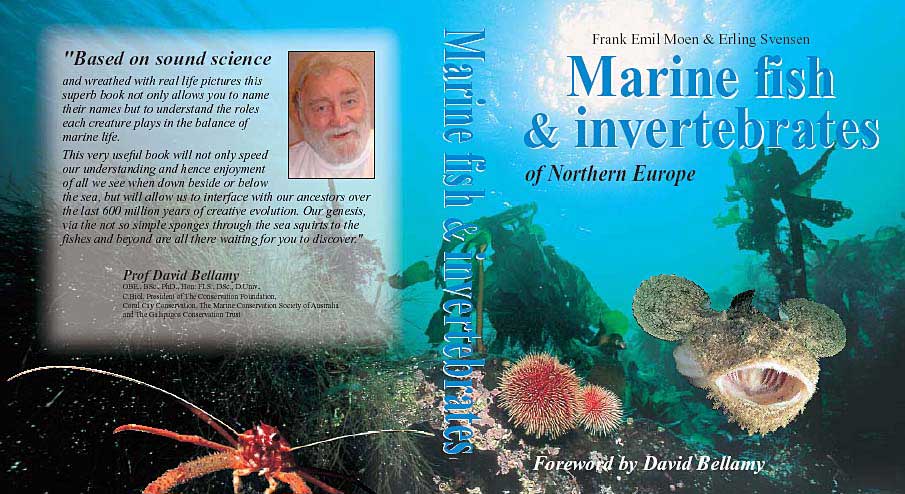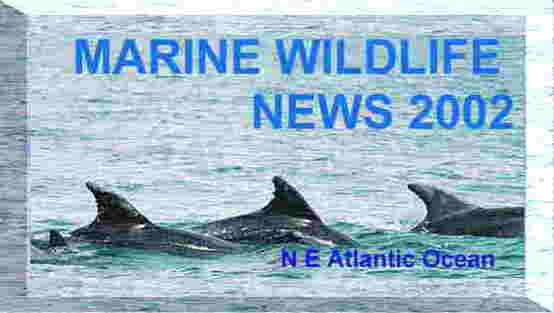
|
|
|
|
|
(BMLSS *** Site) |
|
|
|
Norwegian Marine*** |
|
L-I-N-K-S to Other Sites (Click on Text) |
|
Smart Group |
 |
|
|
|
|
|
|

SPRING 2004
Reports of marine wildlife from all around the British Isles, with pollution incidents and conservation initiatives as they affect the fauna and flora of the NE Atlantic Ocean.
on Microsoft Internet Explorer (best) or Netscape
 |
 |
 |
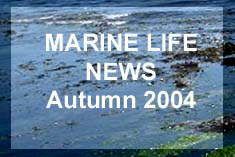 |
LATEST NEWS: SPRING 2004
WILDLIFE REPORTS AND NEWS25 June 2004
A Sperm Whale, Physeter catodon, became stranded on the same island of Vlieland as the Humpback Whale three days earlier. The 15 metre long whale was dead for about two weeks before it washed up on the North Sea coast of the Netherlands.Cetacean News Reports Index
22 June 2004
Within a few months, a third Humpback Whale, Megaptera novaengliae, has stranded in The Netherlands. The eight metre long female whale stranded on the island of Vlieland was only a young whale; the adults are over 11 metres long. This individual also bears the scars of nylon fishing gear and seemed to be freshly dead.
Humpback Whales (first live record from the Netherlands)
BMLSS Cetacea18 June 2004
A new film called Deep Blue from the makers of the Blue Planet opens in good
cinemas.
Trailer (Link)
June 2004
A pregnant male Seahorse, Hippocampus guttulatus, was discovered and photographed in Poole Bay, Dorset. This is the first recorded instance of a pregnant Seahorse in the northern English Channel and anywhere in the seas surrounding the British Isles and is therefore the first confirmed instance of successful breeding, which has long been suspected. Discharge of the young into the shallow sheltered ways of Poole Bay seemed imminent.Report and Photograph by Steve Trewhella (Poole, Dorset)BMLSS Seahorses17 June 2004
Five Basking Sharks, Cetorhinus maximus, were found washed up dead on the Cornish coast in the space of a week, with the latest discovered at Perranporth, North Cornwall. Others have been washed up dead, at Gerran Bay, Coverack, Roseland Bay and the Fal estuary.
News Report
BMLSS Basking Sharks13 June 2004
A young female Hooded Seal, Cystophora cristata, was discovered on Dunnet Beach, (just west of John o' Groats, north coast of Scotland) Caithness. It was treated by British Divers Marine Life Rescue who plan to return the seal to the Orkney Isles nearer its natural habitat around Greenland and the Denmark Strait (between Iceland and Greenland).Report by Alistair Jack of British Divers Marine Life RescueBritish Marine Life Rescue News Page (with the Full Report)
BMLSS Seals6 June 2004
An extraordinary raft of Moon Jellyfish, Aurelia aurita, was seen eight miles (13 km) off the coast of north-west Wales, off the Lleyn peninsula at the north of Cardigan Bay. The Moon Jellyfish had somehow contrived to wedge themselves together into a continuous raft of eight metres square, each of the tens of thousands of jellyfish about 10 cm in diameter, each wedged several deep in one large teeming mass, each jellyfish "pulsing down" in the glassy dead calm sea between two headlands. This unusual congregation has been reported once before in the enclosed Scottish Loch Nevis, but has not been recorded before in the open sea.Report by Barry PughBMLSS Jellyfish5 June 2004
ADUR WORLD OCEANS DAY
Venue: Coronation Green, Shoreham-by-Sea
Adur was one of the leaders in the United Kingdom when it presented an Exhibition celebrating the official World Oceans Day. It was held in the large marquee on Coronation Green overlooking the River Adur.
I estimated the attendance on a sunny day (21.4° C) at 2,500.
With the sheer number of people it made it impossible to speak to people as much as I would like. There were lots of interesting conversations and I was surprised about the number of people who stepped on a Weever Fish last summer, at least half a dozen, and it was lucky we had a small specimen on display so people could have a look at the offender.
The most interesting discovery was an unidentified fossil found on Shoreham beach and brought in by a young girl. This is illustrated on the right.
Adur World Oceans Day 2004 Image Portfolio (by Ray Hamblett)
4 June 2004
A Box Crab, Paramola cuvieri, was caught 12 miles off Falmouth by fisherman Arfee Treneer, from Mylor, Cornwall. The extremely long legs of this deep water crab give it by far the largest span of any of the crabs found in the North-east Atlantic Ocean, although its body is not much larger than the Spiny Spider Crab, Maja squinado. It is a rare capture and according to the BBC Report only the sixth ever caught in British seas and second by this fisherman. This crab like all the giant long-legged crabs is an inhabitant of very deep water in excess of 150 metres and down to depths of 1500 metres. This one was caught in much shallower depths and brought alive, but damaged, to the Blue Reef Aquarium at Newquay. The bionomics of this crab are not well known.
BBC Report
1997 Report
Public Aquaria UK
BMLSS Crabs3 June 2004
A short 30 minute spell of push-netting for shrimps off Shoreham beach on the low spring tide produced two dozen Brown Shrimps, Crangon crangon, a handful of the South-clawed Hermit Crab, Diogenes pugilator, one young venomous Lesser Weever, Echiichthys vipera, two juvenile Grey Swimming Crabs, Liocarcinus vernalis, with 30+ young Flounders and two young Sole. The crab in the photograph with the "fleur-de lis" is Portumnus latipes.
Identification DiscussionsIdentification of the crab (left) by Guido Rappé (Belgium)Adur at Low Tide
Identification of the crab (right) byRichard Lord (Guernsey)
and others on the Marine Wildlife of the North-east Atlantic Ocean Group2 June 2004
ASturgeon, Acipenser sp., was caught in an otter trawl in Bristol Channel south of Swansea at 2:30 pm in the small (under 10 metre) fishing vessel MFV Wonkey SA357, skippered by Robert (or Kevin) Davies. It weighed 120 kg (265 lb), and was 261 cm (8 ft 6") long (including the tail fin) and 246 cm long (excluding the tail). It was caught at a depth of between 10 and 20 metres.I believe it to be Acipenser sturio, but the snout is fairly short and blunt, more like Acipenser gueldenstaedtii (but this is a Danube/Black sea species).
Report from Doug Herdson (National Marine Aquarium, Plymouth)BMLSS Sturgeon30-31 May 2004
A 10 metre long juvenile* Humpback Whale, Megaptera novaengliae, is spotted close inshore off the holiday resort and fishing town of Whitby, Yorkshire, on the east coast of England. Nick Richardson, a field agent with the Hebridean Whale and Dolphin Trust, said: "It's definitely a Humpback Whale. You can tell by the distinctive tail fin and the fact that the pectoral fin has a white underside."
(* Sexual maturity is attained at an age of 4 to 6 years at a mean length of 11.6 metres in males and 12.1 metres in females.)
Barry Sneddon, skipper of the Mary Ann Hepworth – Whitby's famous former lifeboat which now offers sea trips – was gobsmacked by the sighting. He managed to take photographs of the whale. Barry said: "The crew on the Esk Bell saw it first but they thought it was a Basking Shark. "When we got to it we could tell it was a whale straight away. "It was alongside the boat for about five or ten minutes and everyone was taking photos of it. It even blew water out of its blowhole". (From Whitby Today)
Whitby Today News Report
BMLSS CetaceaMay 2004
Marine fish & invertebrates
of Northern Europe
Frank Emil Moen & Erling SvensenIn May 2004 the English edition of the very popular Norwegian Marine Fauna (Dyreliv I havet) was published. Prof. David Bellamy has written the foreword.
Click on the image for more information.
24 May 2004
An Atlantic Sailfish, Istiophorus albicans, was spotted in Falmouth Bay, Cornwall, following a sailing boat three mile south of Black Rock.Observed by Sue Burrows via Ruth WilliamsReport on Cornish Marine Sightings (Fish)18 May 2004
BMLSS Sharks
Three professional anglers witnessed a Thresher Shark, Alopias, leap completely out of the water, tail and all, four consecutive times to the west of Alderney, Channel Islands, Great Britain at about 8:00 pm. One angler told me that he estimated the body length of the shark at about 170 cm. The leaping activity occurred about 100 metres away from their boat. The leaps were head first and perpendicular out of the water. The anglers were drift-fishing for Bass, Dicentrarchus labrax, approximately one mile west of Garden Rock, which has a large Gannet colony covering the entire rock. Atlantic Mackerel, Scomber scombrus, were also in the area.13 May 2004
Three molluscs known as Akera bullata were seen swimming on the surface of the sea and scooped into a net from the south-east corner of Queen Elizabeth II Marina, St Helier, Jersey, in the Channel Islands (English Channel). Most gastropod (snail-like) molluscs with shells crawl over the rocks and cannot swim, so the very sight of a shelled animal on the surface of the sea is likely to provoke curiosity. Akera is a primitive representative of the Anaspidea (Sea Hares), an opisthobranch gastropod mollusc. It has an fragile external shell which protects only part of its body and the mollusc is reported to spend most of its time burrowing in soft mud, but is capable of sporadic periods of swimming and eats algae. The captured specimens were only three out of about ten and were only about 25 mm long and were returned to the marina after identification. This appears to be the first record for Jersey in a marina that provides a home for other southern species with unusual records in the recent past. Information about the biology of Akera bullata is exiguous and it is only known to British rockpoolers as part of a mass stranding at Torbay, Devon. Its known habitats include sheltered bays with Eelgrass, Zostera sp., and it has been reported all around the British coasts, from Norway to the Mediterranean Sea and down to depths of 370 metres, so this a widespread species, but with habits that mean it is not normally encountered by man. It is also reported to have years of abundance so it is a bit of a surprise that it is not more widely known.
Link to the Original Message (with more information)
A small subsp. farrani population of this mollusc occurs in the Fleet Lagoon, Dorset.Specimens discovered by James Letto of the States of Jersey Harbours DepartmentReport and References by Andrew Syvret on theBMLSS Marine Molluscs
Marine Wildlife of the North-east Atlantic Ocean Group
Comment by Andy Horton11 May 2004
Photograph of a green specimen of Aplysia punctata by Peter Glanvill
After the recent gales have battered the north-west of Cornwall, large amounts of kelp has been washed on to the shore all around Trescore in the recent gales and left rotting on the beach at Porthcothan (south of Padstow). With the tonnes of washed up seaweed there were a large number of Sea Hares, Aplysia punctata, which feed on the small seaweeds and epiphytes on large weeds. These Sea Hares have years of abundance and they were observed in appreciable numbers in November 2003.
BMLSS MolluscsSwanage Pier Picture Gallery (with Tompot Blennies)
1 May 2004
A very colourful blenny has made a niche for itself in a crevice on the wreck of the "James Elgan Layne" in Whitsand Bay, Plymouth, Devon. This is a common small fish known as a Tompot Blenny, Parablennius gattorugine, not the similar but more colourful fish known as the Red Blenny, Parablennius ruber, which has only recently been discovered as an inhabitant of the seas around Ireland and Scotland, could be mistaken for the fish in the photograph on the left. The latter discovery would be newsworthy.
Previous feature in the "Torpedo" News Bulletin23 April 2004
Two Killer Whales, Orcinus orca, are spotted just after midday by local fishermen north of the Brisons, near Cape Cornwall off the far western tip of the Cornish coast.Report by Dan the Diver on the Cornish Wildlife Yahoo GroupSeaQuest Southwest / Cornwall Dolphin Group
BMLSS Cetacea
Photographs of Cornwall (including Cornish beaches)14 April 2004
9 April 2004
At 10.30 am we noticed (viewing from the Battery car park) about a dozen Bottle-nosed Dolphins, Tursiops truncatus, just outside Aberdeen harbour. Looking closely at these active dolphins, we realised that they were vigorously 'playing' with a single Harbour Porpoise, Phocoena phocoena. During 20 minutes of observation the poor porpoise was constantly surrounded by at least eight adult (or fully-grown) dolphins. They continuously tossed it high into the air (up to about 5 metres) and were also observed swimming with it in their mouths. Throughout the Porpoise seemed to be alive and was presumably trying to get away. When we left it still appeared to be alive although we don't know how badly injured it was, if at all. In view of recent reports from the Moray Firth of Bottle-nosed Dolphins killing Porpoises we can only assume the worst for it.
Three Risso’s Dolphins, Grampus griseus, were spotted by the Whale and Dolphin Conservation Society survey team in the Bardsey Sound, north-west Wales, at around 6:00 pm. Unfortunately, these dolphins were quickly lost in the Bardsey fog last seen heading northwest. Subsequently, we heard reports from locals that eight dolphins with "big white heads" had been seen that day (about11:30 am) from the view point at the tip of the Lleyn Peninsula, so just around the point from where we had seen them. This pod was said to have been close in to shore and to have had two smaller dolphins, perhaps calves, in it.
7-8 April 2004
Beautiful but if a not deadly jellyfish, the Mauve Stinger, Pelagia noctiluca, can impart a nasty sting to the unlucky swimmer. They are now being seen around the Channel Islands. I found one stranded in a rock pool by Lithou Island on the east coast of Guernsey on 7 April, 2004 and another stranded in a rock pool on the east coast south of St. Peter Port on 8 April 2004. Strandings of this jellyfish seem to occur often in spring around these islands. They are not common around the rest of the British Isles but there are reports in some years off the south and west coasts, especially off Cornwall.Report and Photograph © by Richard Lord (Guernsey)BMLSS Jellyfish: Mauve Stinger
on the Marine Wildlife of the North-east Atlantic Ocean Group31 March - 2 April 2004
Another Common Seal, Phoca vitulina, ventures up the River Thames to the densely populated urban area at Lambeth and gets covered in mud, prompting a rescue mission by British Divers Marine Life Rescue.
British Divers Marine Life Rescue News Page (with the Full Report)
BMLSS Seals27 March 2004
A former Royal Navy frigate has been sunk off Cornwall to create the UK's first artificial diving reef. Thousands of people watched from Whitsand Bay near Plymouth as HMS Scylla was scuttled at 3:28 pm GMT.
The explosives were detonated by 12-year-old Daniel Green, from Ivybridge, Devon, accompanied by environmentalist David Bellamy.
BBC News Report
The position of the Scylla Artificial Reef is 50º 19.64 ´N 004º 15.20´W with the bow facing south-west, about 800 metres from the wreck of the James Eagan Layne. It is on the bottom at 20 metres below Chart Datum and listing 20º to starboard. The sea bottom is dark granule sand.
1 April 2004
The diving team at the National Marine Aquarium were the first civilian divers to ever dive on the unique Scylla reef, after the Royal Navy divers had been down to inspect the sunken warship.
The first fish to arrive was a Ballan Wrasse, Labrus bergylta.Additional Report by Doug Herdson (National Marine Aquarium, Plymouth)
on the Marine Wildlife of the North-east Atlantic Ocean Group
All reports by Andy Horton unless the credits are given to other observers or reporters.
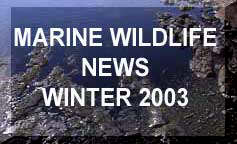 |
 |
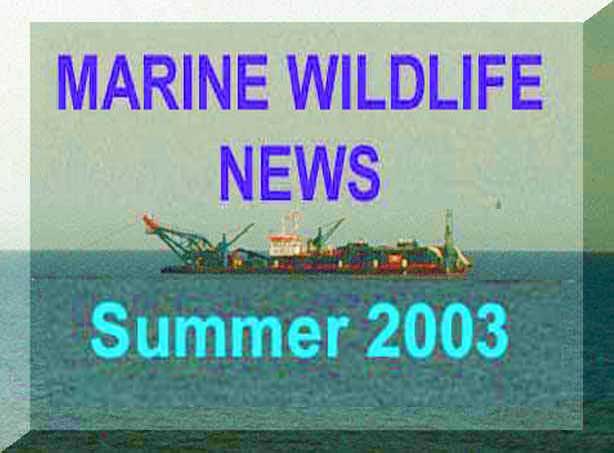 |
 |
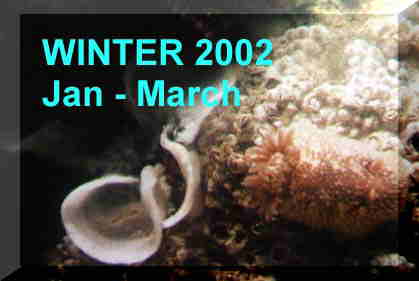 |
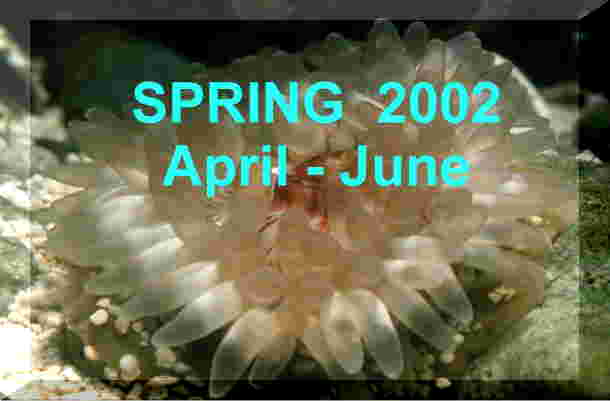 |
 |
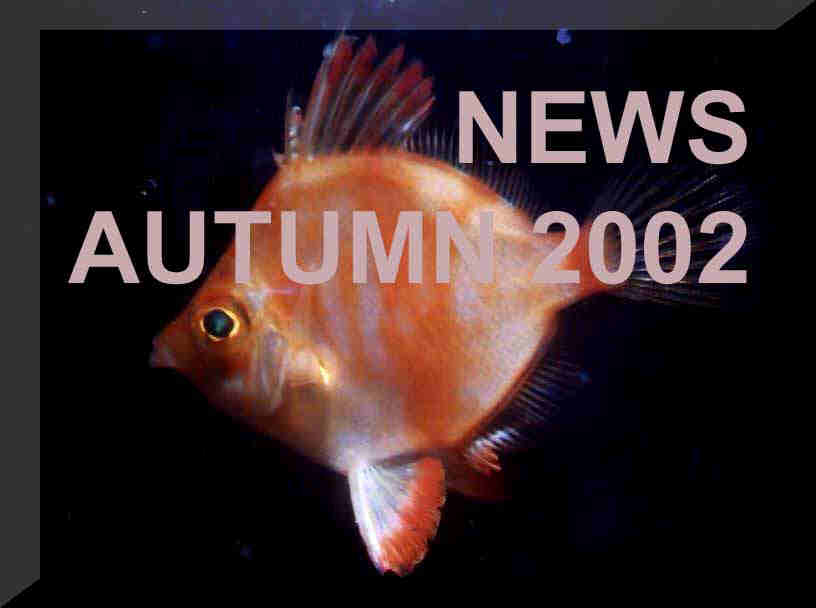 |
FOR EARLIER REPORTS CLICK ON THE BUTTON BELOW

The Marine Wildlife of the NE Atlantic Forum commences.
PLEASE JOIN

MARINE WILDLIFE of the NE ATLANTIC EFORUM PAGE (LINK TO)
Nature Notes Webring
News 2002
News 2001
News 2000
News 1999
|
Use these links if your are familiar with the scientific classifications of marine life |
The BMLSS (England) site commenced on 1 January 1997.
|
|
 |
 |
Andy Horton, Webmaster
|
|
|
|
|
|
Membership Form |
News 2001 News 2000 |

